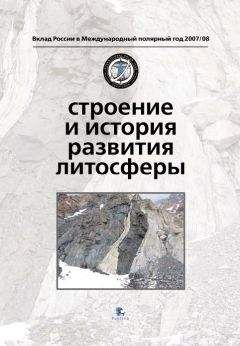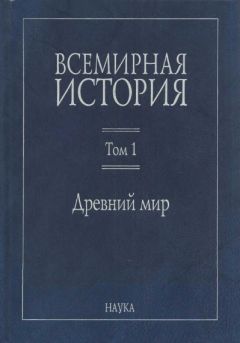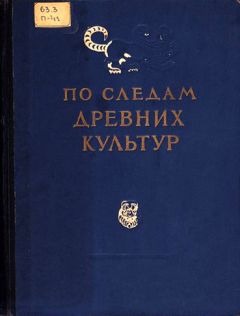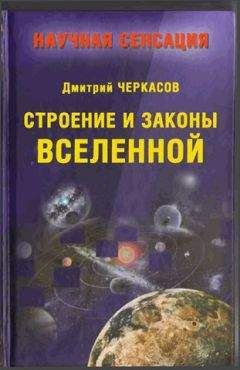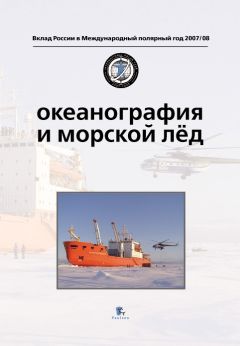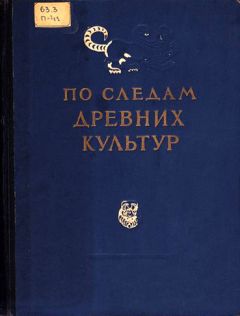Авторы благодарят Д.В. Кузьмина за помощь в проведении электронно-зондового микроанализа оливина. Работа выполнена при финансовой поддержке программы Отделения Наук о Земле, РАН № 14 (2006–2008 гг.) «История формирования бассейна Северного Ледовитого океана и режим современных природных процессов Арктики (по программе Полярного года)» и программы Президиума № 16 РАН (2009 г.) «Окружающая среда в условиях изменяющегося климата: экстремальные природные явления и катастрофы».
Соболев А.В., Криволуцкая Н.А., Кузмин Д.В. Петрология родоначальных расплавов и мантийных источников магм Сибирской трапповой провинции. // Петрология 2009, т.17, № 3, 1–37.
Сущевская Н.М., Черкашов Г.А., Баранов Б.В., Томаки К., Сато Х., Нгуен Х., Беляцкий Б.В., Цехоня Т.И. Особенности толеитового магматизма в условиях ультрамедленного спрединга на примере хребта Книповича (Северная Атлантика). // Геохимия. 2005. № 3, 254–274.
Сущевская Н.М., Евдокимов А.Н., Беляцкий Б.В. и др. Условия формирования четвертичного магматизма о. Шпицберген. // Геохимия. 2008.№ 1. С. 1–17.
Сущевская Н.М., Кораго Е.А., Беляцкий Б.В., Сироткин А.Н. Геохимические особенности неогенового магматизма острова Шпицберген. // Геохимия. 2009. № 10.С. 1027–1040
Сущевская Н.М., Пейве А.А., Беляцкий Б.В. Условия формирования слабо-обогащенных толеитов в северной части хребта Книпович. 2009 // Геохимия. (в печати)
Сущевская Н.М., Соболев А.В. Оценка характера и степени гетерогенности мантии полярной Атлантики по данным изучения магматизма хребта Книпович и о. Шпицберген // Вестник Отделения Наук о Земле РАН, № 1 (27) 2009, М. ИФЗ РАН, 2009.
Amundsen H.E.F., Griffin W.L., O’Reilly S.Y. The lower crust and upper mantle beneath northwestern Spitsbergen: evidence from xenoliths and geophysics. Tectonophysics. 1987. V.139, 169–185.
Baranov B., Gusev Ye., Suschshevskaya N., Cherkashov G. Oligocene rocks of the Knipovich Ridge (Northern Atlantic) as evidence of ridge jumping and propagation. In: Geology and Geophysics of the Knipovich Ridge. // Abstracts of the K2K post-cruise meeting. St.Petersburg, 2001, 7–8.
Beattie P. (1993) Olivine-Melt and Ortho-Pyroxene-Melt Equilibria. Contributions to Mineralogy and Petrology 115(1), 103–111.
Crane K., Sundvor E., Buck R., Martinez F. Rifting in the Northern Norwegian-Greenland Sea: thermal test of asymmetric spreading. // J.Geophys.Res. 1991. V. 96.P. 14529–14550.
Czuba W., Ritzmann O., Nishimura Y., Grad M., Mjelde R., Guterch A., Jokat W. Crustal structure of the continent-ocean transition zone along two deep seismic transects in north-western Spitsbergen. // Polish Polar Res. 2004. V.25. N3-4, 205–221.
Dick, H.J.B., Lin, J. and Schouten, H., 2003. An ultraslow-spreading class of ocean ridge. Nature, 426(6965): 405–412.
Gurenko, A.A, Sobolev, A.V., Hoernle, K.A., Folkmar, H, and Schmincke, H-U. (2009). Enriched, HIMU-type peridotite and depleted recycled pyroxenite in the Canary plume: a mixed-up mantle. // Earth and Planetary Science Letters, 277, 514–524.
Hauri E.H., Whitehead J.A., Hart S.R. Fluid dynamic and geochemical aspects of entrainment in mantle plumes. // J. Geophys. Res. 1994. V. 99. P. 24275-24300.
Herzberg C. and O’Hara M. J. (2002) Plume-associated ultramafic magmas of phanerozoic age. Journal of Petrology 43(10), 1857–1883.
Humayun M., Qin L. P., and Norman M. D. (2004) Geochemical evidence for excess iron in the mantle beneath Hawaii. Science 306(5693), 91–94.
Hofmann A.W.,White W.M., Mantle plumes from ancient oceanic crust // Earth and Planetary Science Letters. 1982. V. 57. P. 421–436.
Ionov D.A., Bodinier J-L., Mukasa S.B., Zanetti A. Mechanisms and sources of mantle metasomatism: major and trace element compositions of peridotite xenoliths from Spitsbergen in the context of numerical modeling. // Jour. Petrology. 2002. V.43, N12, 2219–2259.
Ionov D.M., Mukasa S.B., Bodinier J.-L. Sr-Nd-Pb isotopic compositions of peridotites xenoliths from Spitsbergen: numerical modeling indicates Sr-Nd– decoupling in the mantle by melt percolation metasomatism. // Jour. Petrology. 2002. V 43, N12, 2261–2278.
Kinzler R. J., Grove T. L., and Recca S. I. (1990) An Experimental-Study on the Effect of Temperature and Melt Composition on the Partitioning of Nickel between Olivine and Silicate Melt. Geochimica Et Cosmochimica Acta 54(5), 1255–1265.
Michael, P.J. et al., 2003. Magmatic and amagmatic seafloor generation at the ultraslow-spreading Gakkel ridge, Arctic Ocean. Nature, 423(6943): 956-U1.
Pertermann M. and Hirschmann M. M. (2003) Partial melting experiments on a MORB-like pyroxenite between 2 and 3 GPa: Constraints on the presence of pyroxenite in basalt source regions from solidus location and melting rate. Journal of Geophysical Research-Solid Earth 108(B2).
Prestvik T. Cenozoic plateau lavas of Spisbergen – a geochemical study. Arbok. Norsk Polarinstituitt. 1977. Oslo. 1978, 129–143.
Ritzmann O. and Jokat W. Crustal structure of northwestern Svalbard and the adjacent Yermak Plateau: evidence for Oligocene detachment tectonics and non-volcanic breakup // Geophys. J. Int. 2003. V. 152. P. 139–159.
Scogseid J., Planke S., Faleide J.I., Pedersen T., Eldholm O., and Neverdal F., 2000. NE Atlantic continental rifting and volcanic margin formation. In Dynamics of the Norwegian Margin. pp 295–326, edit.Nottveld. Geol. Soc. Spec. Pub. 167. The Geol. Society London. London.
Sobolev A. V., Hofmann A. W., Kuzmin D. V., Yaxley G. M., Arndt N. T., Chung S. L., Danyushevsky L. V., Elliott T., Frey F. A., Garcia M. O., Gurenko A. A., Kamenetsky V. S., Kerr A. C., Krivolutskaya N. A., Matvienkov V. V., Nikogosian I. K., Rocholl A., Sigurdsson I. A., Sushchevskaya N. M., and Teklay M. (2007) The amount of recycled crust in sources of mantle-derived melts. Science 316(5823), 412–417.
Sobolev A. V., Hofmann A. W., Sobolev S. V., and Nikogosian I. K. (2005) An olivine-free mantle source of Hawaiian shield basalts. Nature 434(7033), 590–597.
Sobolev, A.V., Hofmann, A.W., Brügmann, G., Batanova, V. G., and Kuzmin, D.V. (2008). A quantitative link between recycling and osmium isotopes. Science, 321, (5888), 536
Tamaki K., Cherkashov G.A., and Knipovich Scientific Party. Japan-Russian cooperation at the Knipovich Ridge in the Arctic Sea. // InterRidge News. 2001. V.10. N1, 48–51.
Tuff J., Takahashi E., Gibson S.A. Experimental constraints on the role of garnet pyroxenite in the genesis of high-Fe mantle plume derived melts // Journal of Petrology. 2005. V. 46. P. 2023–2058.
Walter M. J. (1998) Melting of garnet peridotite and the origin of komatiite and depleted lithosphere. Journal of Petrology 39(1), 29–60.
Yaxley G. M. and Green D. H. (1998) Reactions between eclogite and peridotite: mantle refertilisation by subduction of oceanic crust. Schweiz. Mineral. Petrogr. Mitt. 78, 243–255.
Yaxley G. M. and Sobolev A. V. (2007) High-pressure partial melting of gabbro and its role in the Hawaiian magma source. Contributions to Mineralogy and Petrology 154(4), 371–383.
A.V. Sobolev[100] and N. M. Sushchevskaya[101]. The role of mantle heterogeneity in the origin of Cenozoic magmas of Knipovich Ridge and Spitsbergen Archipelago
Abstract
The first data on the temporal evolution of mantle source composition of magmas from associated structures of Polar Ocean (Spitsbergen island and Knipovich ridge) were obtained for last 20 m.y. on the base of chemical composition and 87Sr/86Sr and 143Nd/144Nd isotope ratios of rocks and major and trace elements concentrations in olivine phenocrysts. It is shown that the major source of Spitsbergen Neogene lavas was olivine free pyroxenite with elevated 87Sr/86Sr and reduced 143Nd/144Nd ratios which has been likely produced by reaction of recycled oceanic and lower continental crust with peridotite. Due to its high melt productivity, such a pyroxenite may act as a source of substantial amount of magma under thick continental lithosphere thus triggering its breakup. With decreasing age (Neogene-modern) the proportion of pyroxenite component of magmas gradually falls down due to increasing proportion of peridotite component with subsequent progression of composition of Sr and Nd isotopes toward depleted end-member. We explain this evolution by delimitation of continental lithosphere and subsequent decompression melting of peridotitic component.
О.В. Петров[102], А.Ф. Морозов[103], А.А. Лайба[104], С.П. Шокальский[105], Е.А. Гусев[106], М.И. Розинов[107], С.А. Сергеев[108], Н.Н. Соболев[109], Т.Н. Корень[110], С.Г. Сколотнев[111], В.А. Дымов[112], И.В. Бильская[113]
Архейские граниты на Северном полюсе
В необычно теплое полярное лето 2007 г. в ходе морского научно-исследовательского рейса НИС «Академик Федоров» (рис. 1), выполнявшегося по программе 3 МПГ «Арктика-2007» (рис. 2), объединенная группа геологов ВНИИОкеангеология и ПМГРЭ (рис. 3) осуществила 2 августа в точке Северного полюса подъем донных осадков (станция № AF-0701 – 89°59’10.9’’ с., 32°19’13.8’’ в) (рис. 4, 5). В поднятых илах, наряду с дресвой и гравием песчаников, алевролитов и жильного кварца было обнаружено 5 небольших обломков гранитных пород архейско-палеопротерозойского возраста.
Рис. 1. НИС «Академик Федоров»
Рис. 2. Маршрут следования НИС «Академик Федоров», расположение морских геологических станций донного опробования
Рис. 3. Участники экспедиции Ю.Г.Леонов (ГИН РАН), А.А.Лайба (ПМГРЭ) на борту НИС «Академик Федоров»
Рис. 4. Станция AF-0701. Спуск бокскорера
Рис. 5. Станция AF-0701. Подъем бокскорера
Морская станция AF-0701 расположена в северной части океанической котловины Амундсена у северо-западного подножья подводного хребта Ломоносова (рис. 2). Донные осадки были подняты с глубины 4170±5 м при помощи бокскорера (коробчатого пробоотборника) объемом 50х50х50 см, сохраняющего в целости первичное напластование пород (рис. 6). Разрез осадков указанной станции представляет собой (сверху вниз):
1. 0–02 см. Наилок желтовато-коричневый, пелитовый, сильно обводненный, с малой примесью тонкозернистого песка.
2. 02–20 см. Алевропелит шоколадно-коричневый, однородный, иногда песчанистый, мягкий и вязкий, до текучего состояния.
3. 20–50 см. Алевропелит того же состава и консистенции, однако представленный чередованием 6–7 шоколадно-коричневых и зеленовато-серых горизонтальных полос с размытыми границами и мощностью по 5–6 см каждый (Гусев и др., 2008а).
Рис. 6. Станция AF-0701. Разрез донных осадков, поднятых с глубины 4170±5 м при помощи бокскорера
По данным С.Г. Сколотнева (Гусев и др., 2008б), осадки имеют однородный химический и минеральный состав. Они сложены кварцем – 30 %, плагиоклазом – 10 %, слюдой – 25 %, каолинитом – 15 %, смектитом – 15 % и хлоритом – 5 %. Микропалеонтологическим анализом установлен голоценовый и позднеплейстоценовый возраст поднятых осадков. По находкам известкового планктона были выделены возрастные уровни потепления – проникновения теплых атлантических вод в Арктический бассейн, соответствующие 1–2, 11,4 и 24–28 тыс. лет. Отмечается примесь углистых частиц, палеозойских и мезозойских палиноформ. Следует отметить, что по составу изученные осадки заметно отличаются от донных илов глубоководных котловин Арктического бассейна, для которого характерны: иллит – около 55 %, хлорит – около 25 %, каолинит – около 15 % и смектит – около 10 % (Левитан и др., 2007).
